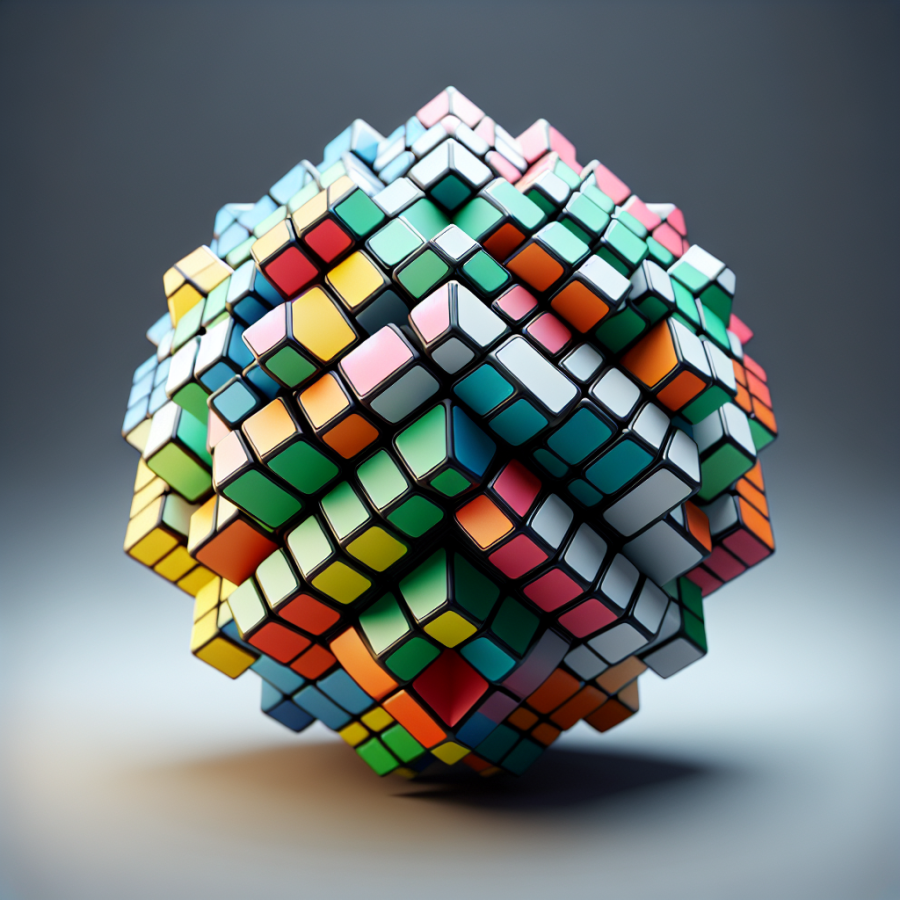Unraveling the Mysteries of the Megaminx: Techniques for Efficient Solving
The Megaminx is a puzzle that can seem overwhelmingly complex at first glance, with its numerous faces and seemingly chaotic arrangement of colors. But just like its cube-shaped cousins, the Megaminx can be methodically solved with a combination of memorization, pattern recognition, and strategic maneuvering. To excel at solving this dodecahedron puzzle, enthusiasts must refine their approach, focusing on efficient techniques that can shave off precious seconds from their solve times.
Layer-by-layer solving is the cornerstone of mastery when it comes to the Megaminx. By building the layers one at a time, starting from one face and expanding outwards, solvers can create a solid foundation for the rest of the puzzle. This method allows for a structured approach that can easily be improved upon with practice.
The F2L (First Two Layers) system, borrowed from the 3x3 Rubik's Cube, is remarkably adaptable to the Megaminx. This technique involves pairing up edge and corner pieces before placing them into their correct positions, reducing the number of moves required. Adapting F2L to the Megaminx's geometry means recognizing the different shapes of pieces and how they fit together in the puzzle's unique pattern.
Advanced solvers often implement algorithms specifically designed for the Megaminx's last layer (LL) permutations and orientations. These algorithms may be more complex due to the puzzle's twelve sides, but they also offer greater control over the final configuration of the puzzle. Dedication to memorizing these algorithms pays dividends in the efficiency and speed of your solves.
The use of commutators, a sequence of moves that alters the position of certain pieces without disturbing the rest of the puzzle, is also a powerful tool in a solver's arsenal. By identifying patterns and creating custom commutators for specific scenarios, solvers can drastically improve their handling of the more daunting final stages of the Megaminx.
Edge orientation and permutation, one of the final challenges of the Megaminx, demands attention to detail and precision. Mastering the various cases of edge positioning is a significant step towards efficiently completing the puzzle. Intuitive techniques, using familiar patterns and sequences from traditional cube solving, can be invaluable here, allowing for quicker recognition and resolution of the remaining pieces.
Corner orientation and permutation on the Megaminx also have their own sets of algorithms. As with edge pieces, recognizing the state of corner pieces and efficiently applying the correct moves will result in a completed puzzle.
Read also:
Unleashing Potential: The Powerful Impact of CrossFit on Fitness and Health
Navigating the Nuances of the Megaminx: Advanced Tips for Puzzle Enthusiasts
Navigating the nuances of the Megaminx, a dodecahedron-shaped puzzle with 12 faces and a total of 50 movable pieces, requires a deeper understanding of its complex structure and a step-up in solving strategies compared to the traditional Rubik's Cube.
Advanced puzzle enthusiasts recognize that proficiency in solving the Megaminx lies in the refinement of several techniques and the ability to adapt standard solving methods to the puzzle’s unique geometry. One of the first steps in mastering the Megaminx is to gain a strong grasp of the color scheme and layout, as this will be crucial in intuiting piece placement without relying on trial and error.
One advanced tip for the Megaminx involves developing a solid star-building strategy. This involves creating a star pattern on one face, which is analogous to the cross on a Rubik's Cube, but with one additional edge piece to account for. Focusing on creating the star can lay a strong groundwork for the remaining first-layer edges and the subsequent placement of the corner pieces.
Corner orientation is another area where advanced techniques come into play. Unlike the 3x3 cube where corner orientation can be solved intuitively, the Megaminx's numerous corners make it advantageous to learn algorithms that can handle multiple corner orientations simultaneously, thereby saving time. Commutator sequences, which are specific sets of moves that alter a small part of the puzzle while leaving the rest untouched, can be particularly effective here.
Edge pairing on the Megaminx, akin to edge pairing on larger Rubik's Cubes, becomes crucial as you navigate from the F2L (First Two Layers) to the S2L (Second Two Layers). Given the increased number of edge pieces, learning algorithms that pair edges without disrupting the already solved portions of the puzzle becomes essential for efficient solves.
After the completion of the F2L and S2L, advanced solvers will then move on to the last layer (LL), where recognition of various permutation cases is key. Unlike the 3x3 cube that has only one last layer, the Megaminx features a more complex LL with more potential permutation cases. Therefore, memorizing algorithms specific to the Megaminx's last layer will aid in efficiently solving it.
Another aspect that can significantly improve Megaminx solve times is improving finger tricks and puzzle grip. Due to the puzzle's dodecahedral shape, traditional finger tricks do not always apply.




